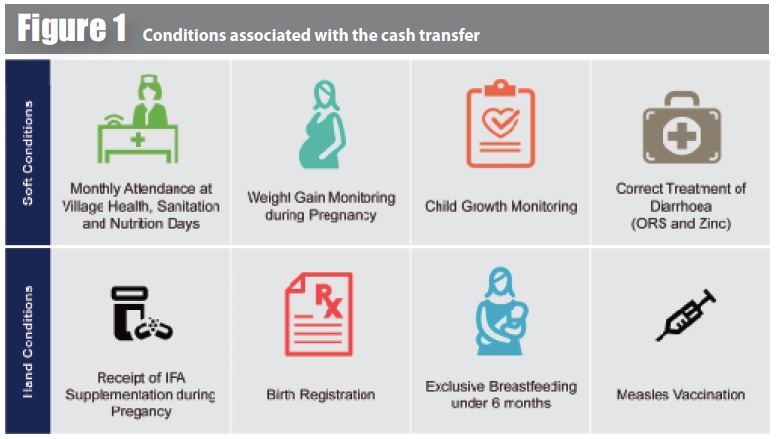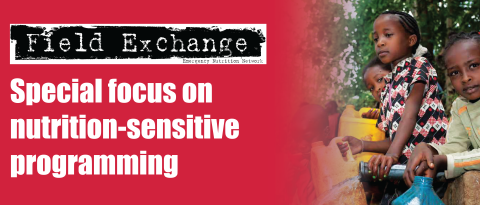Large-scale intervention to introduce orange sweet potato in Mozambique increases vitamin A intake
Summary of research1
Location: Mozambique
What we know: Vitamin A deficiency is associated with increased risk of morbidity and mortality and ocular disorders in pregnant and lactating women and infants and children, particularly in Africa.
What this article adds: A randomised, controlled-effectiveness study of a large-scale intervention to promote household-level orange sweet potato (OSP) production and consumption was conducted in rural Mozambique (144 villages). It involved integrated agricultural, demand creation/behaviour change and marketing components tested at two levels of intensity (one-year versus three-year interventions). Both OSP and vitamin A intakes were found to be greater in both intervention groups and OSP was the dominant source of Vitamin A. There were no major differences in the impact on OSP or vitamin A intakes between less and more intensive interventions. The authors conclude this is a viable, acceptable, scalable intervention in vitamin A-deficient communities.
Vitamin A deficiency is associated with increased risk of morbidity and mortality, and ocular disorders such as night blindness, xerophthalmia and blindness, affecting infants, children and women during pregnancy and lactation. African regions account for the greatest number of pre-school children with night blindness and for more than one quarter of all children with sub-clinical vitamin A deficiency (WHO, 2009). Beta-carotene-rich OSP has been shown to improve vitamin A status of infants and young children in controlled efficacy trials and in a small-scale effectiveness study with intensive exposure to project inputs (Low, Arimond, Osman et al, 2007). However, the potential of this important food crop to reduce the risk of vitamin A deficiency in deficient populations depends on the ability to distribute OSP vines and promote its household production and consumption on a large scale. In rural Mozambique, the authors conducted a randomised, controlled-effectiveness study of a large-scale intervention to promote household-level OSP production and consumption using integrated agricultural, demand creation/behaviour change and marketing components.
An intervention to introduce household-level cultivation of OSP was implemented between 2006 and 2009 in 144 selected villages from four districts of Zambe´zia Province in Mozambique. The intervention reached more than 12,000 farm households, divided into smaller clusters (around 100 households) for observation. The intervention integrated three components. An agricultural component supported the distribution of vines as planting material for OSP and provided training for improved production practices. A demand creation/behaviour change component included education on maternal and child health and nutrition topics targeted to women in participating households, and a campaign for the general public to raise awareness of the benefits of OSP through community drama, field-day events, and radio spots and programmes. Finally, a marketing and product development component included training for OSP traders, urban and rural market development for the sale of OSP, and establishment of distinct market stalls selling and providing information on OSP within the general area.
The intervention tested two models of differing intensity for comparison. In the first year, all three intervention components were implemented in the same manner in both model one and model two communities. In the low-intensity model (model two), the farmer group/household-level activities and support from agriculture and nutrition extensionists did not continue beyond the first year of implementation. In the high-intensity model (model one), training sessions were continued in the second and third years, with some adjustment according to needs and preferences. In both models, communities received additional vine distributions and exposure to the broader marketing and promotional components each year.
The primary nutrition outcomes were OSP and vitamin A intakes by children aged 6-35 months and three to five-and-a-half years, and women. The baseline nutrition survey was conducted in November to December 2006, before OSP vines were distributed, and the follow-up survey in May to June 2009 during the sweet potato harvest season. Surveys consisted of 24-hour recall interviews to measure dietary intake of women, food frequency questionnaires with mothers to recall the foods consumed by their children in the last seven days, and weight and length/height measurements of women and participating children.
Results showed that, at follow-up, OSP intake was significantly greater in model one and model two groups relative to the control for all three age groups. Net increases in OSP intakes for model one were 46g, 48g and 97g per day for younger children, older children and women respectively. Model two showed similar results. At follow-up, vitamin A intakes were also significantly higher in the model one and model two groups compared with the control groups for all age groups. Increases in vitamin A intake for model one were 263mg, 254mg and 492mg retinol activity equivalents per day among the younger children, older children and women, respectively. The net change in mean vitamin A intakes of the intervention groups relative to the control represented increases of 63%, 169% and 42% among reference children, young children and women, respectively. These net increases were equivalent to approximately 74%, 118% and 55 % of the corresponding Estimated Average Requirements (EAR) of vitamin A for the same groups, representing a substantial increase in dietary vitamin A. At follow-up, OSP was the dominant source of vitamin A in the diet in the model one and model two groups combined, providing 71-84 % of all total vitamin A across all groups. Specifically, among reference children, OSP provided 80% of total vitamin A in the intervention groups combined; smaller proportions of vitamin A were derived from green leafy vegetables (11%), yellow sweet potato (3%), and orange fruits and vegetables, such as pumpkin and papaya (2%). Similar results were observed for other age groups.
 Results show that there were no major differences in the impact on OSP or vitamin A intakes between lower intensity (one year) and higher intensity (three year) models, indicating that the magnitude of impact observed in the present study was not compromised by the less intensive intervention. This suggests that additional project inputs to supervise and support the village-level promoters in repeating agriculture and nutrition education sessions through the second and third years of the intervention did not translate into additional impact in the amount of OSP consumed, vitamin A intake, or the prevalence of inadequate vitamin A intake. The authors suggest that this is an important finding as the additional cost of maintaining direct, community-level contact by project staff beyond the first year of intervention is not justified in these OSP-producing areas; maintenance of district-level activities and mass media may be sufficient to maintain behaviour change after the first year.
Results show that there were no major differences in the impact on OSP or vitamin A intakes between lower intensity (one year) and higher intensity (three year) models, indicating that the magnitude of impact observed in the present study was not compromised by the less intensive intervention. This suggests that additional project inputs to supervise and support the village-level promoters in repeating agriculture and nutrition education sessions through the second and third years of the intervention did not translate into additional impact in the amount of OSP consumed, vitamin A intake, or the prevalence of inadequate vitamin A intake. The authors suggest that this is an important finding as the additional cost of maintaining direct, community-level contact by project staff beyond the first year of intervention is not justified in these OSP-producing areas; maintenance of district-level activities and mass media may be sufficient to maintain behaviour change after the first year.
The authors conclude that the present large-scale intervention to introduce and promote OSP was successful in incorporating OSP into the diet of women and children, and in significantly increasing the adequacy of vitamin A intakes. OSP is an acceptable, local food source of vitamin A that can easily replace currently-grown white or yellow sweet potato varieties. The promotion of OSP in rural, sweet potato-growing areas in Mozambique can provide a meaningful source of additional vitamin A in a population where vitamin A deficiency is persistently high. Furthermore, the authors found no differences between a more intensive and a less intensive intervention design, indicating that future interventions to introduce OSP as a source of vitamin A in sweet potato-producing areas of Mozambique can use less intensive intervention models.
Footnotes
1 Hotz, C., Loechl, C., de Brauw, A., Eozenou, P., Gilligan, D., Moursi, M., Munhaua, B., van Jaarsveld, P., Carriquiry, A., and Meenakshi, J.V. (2012). British Journal of Nutrition 108, 163-176. doi:10.1017/S0007114511005174 www.ncbi.nlm.nih.gov
References
Low, J.W., Arimond, M., Osman, N., et al. (2007). A food-based approach introducing orange-fleshed sweet potatoes increased vitamin A intake and serum retinol concentrations in young children in rural Mozambique. J Nutr 137, 1320-1327.
WHO (2009). Global Prevalence of Vitamin A Deficiency in Populations at Risk 1995–2005.
WHO Global Database on Vitamin A Deficiency. Geneva: World Health Organization


